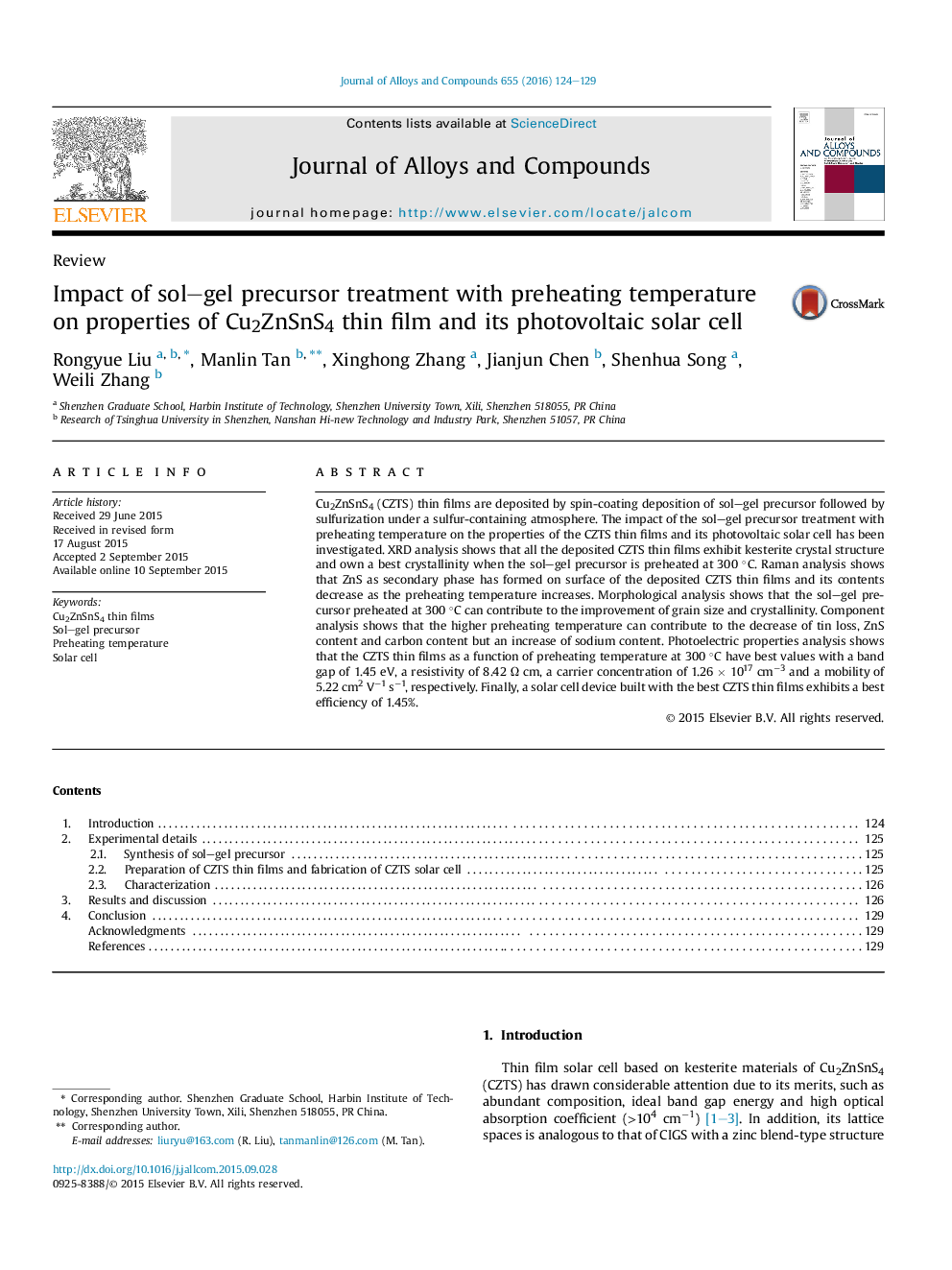| کد مقاله | کد نشریه | سال انتشار | مقاله انگلیسی | نسخه تمام متن |
|---|---|---|---|---|
| 1607850 | 1516238 | 2016 | 6 صفحه PDF | دانلود رایگان |

• High preheating temperature contributed to the decrease of residual carbon.
• Tin loss can be effectively controlled by using high preheating temperature.
• The optimal preheating temperature is 300ºC to obtain high-quality CZTS films.
• The fabricated CZTS device with a best efficiency of 1.45% was obtained.
Cu2ZnSnS4 (CZTS) thin films are deposited by spin-coating deposition of sol–gel precursor followed by sulfurization under a sulfur-containing atmosphere. The impact of the sol–gel precursor treatment with preheating temperature on the properties of the CZTS thin films and its photovoltaic solar cell has been investigated. XRD analysis shows that all the deposited CZTS thin films exhibit kesterite crystal structure and own a best crystallinity when the sol–gel precursor is preheated at 300 °C. Raman analysis shows that ZnS as secondary phase has formed on surface of the deposited CZTS thin films and its contents decrease as the preheating temperature increases. Morphological analysis shows that the sol–gel precursor preheated at 300 °C can contribute to the improvement of grain size and crystallinity. Component analysis shows that the higher preheating temperature can contribute to the decrease of tin loss, ZnS content and carbon content but an increase of sodium content. Photoelectric properties analysis shows that the CZTS thin films as a function of preheating temperature at 300 °C have best values with a band gap of 1.45 eV, a resistivity of 8.42 Ω cm, a carrier concentration of 1.26 × 1017 cm−3 and a mobility of 5.22 cm2 V−1 s−1, respectively. Finally, a solar cell device built with the best CZTS thin films exhibits a best efficiency of 1.45%.
(a) SEM cross-section image of the stack of CZTS device after sequential annealing. (b) J–V characteristics of CZTS device with an efficiency of 1.45%Figure optionsDownload as PowerPoint slide
Journal: Journal of Alloys and Compounds - Volume 655, 15 January 2016, Pages 124–129